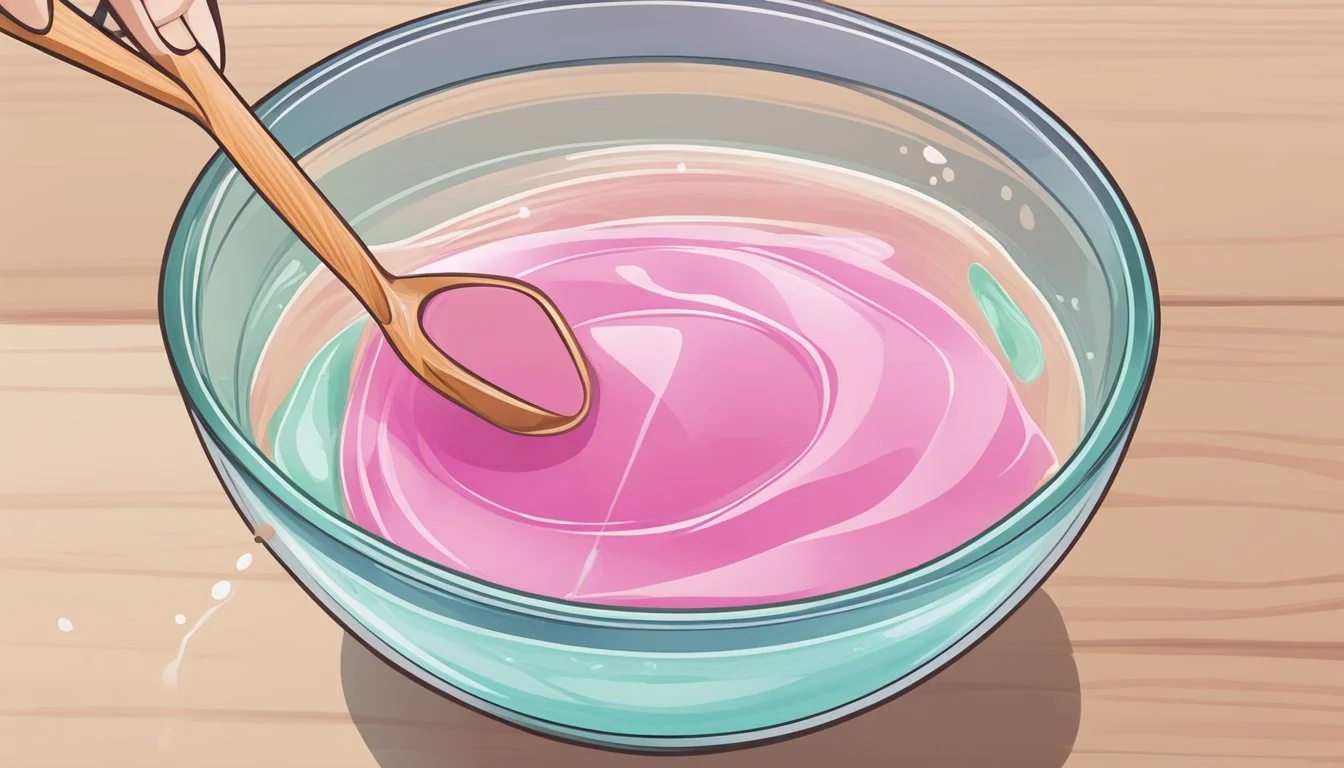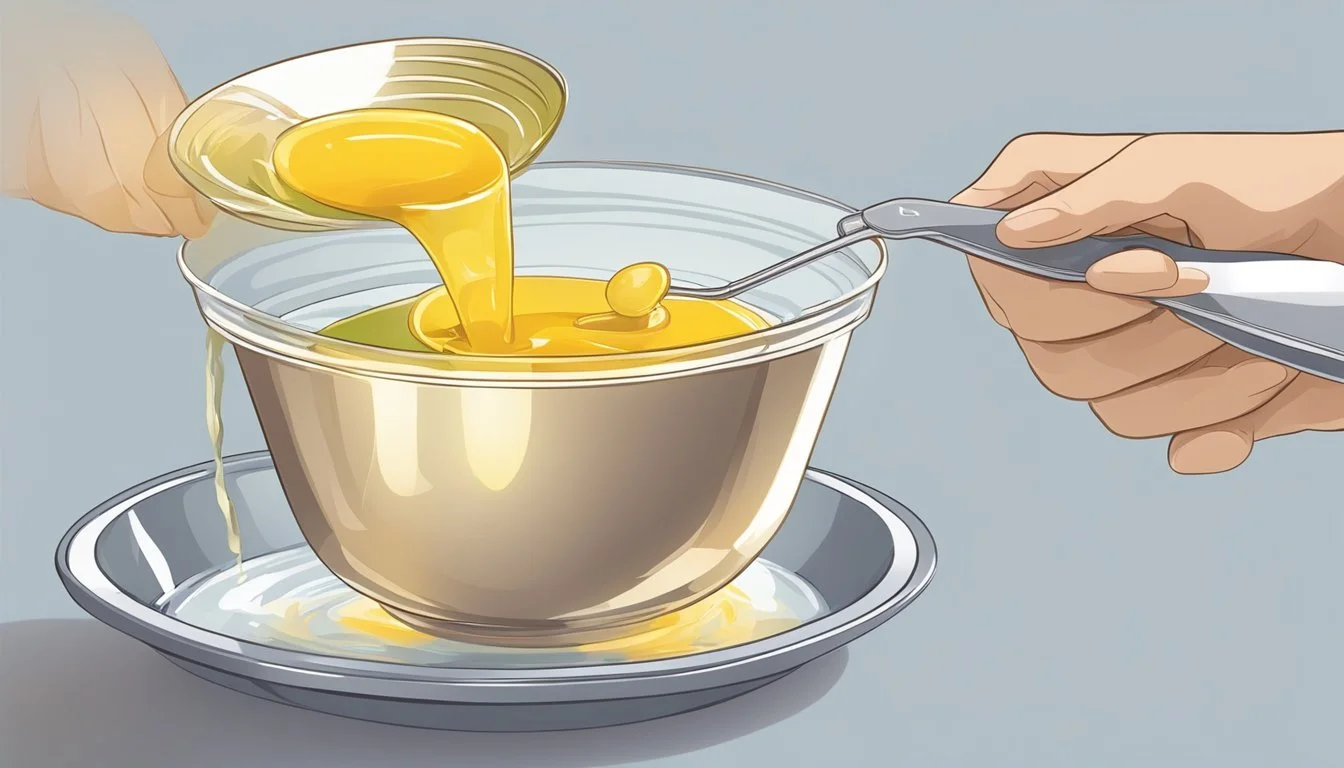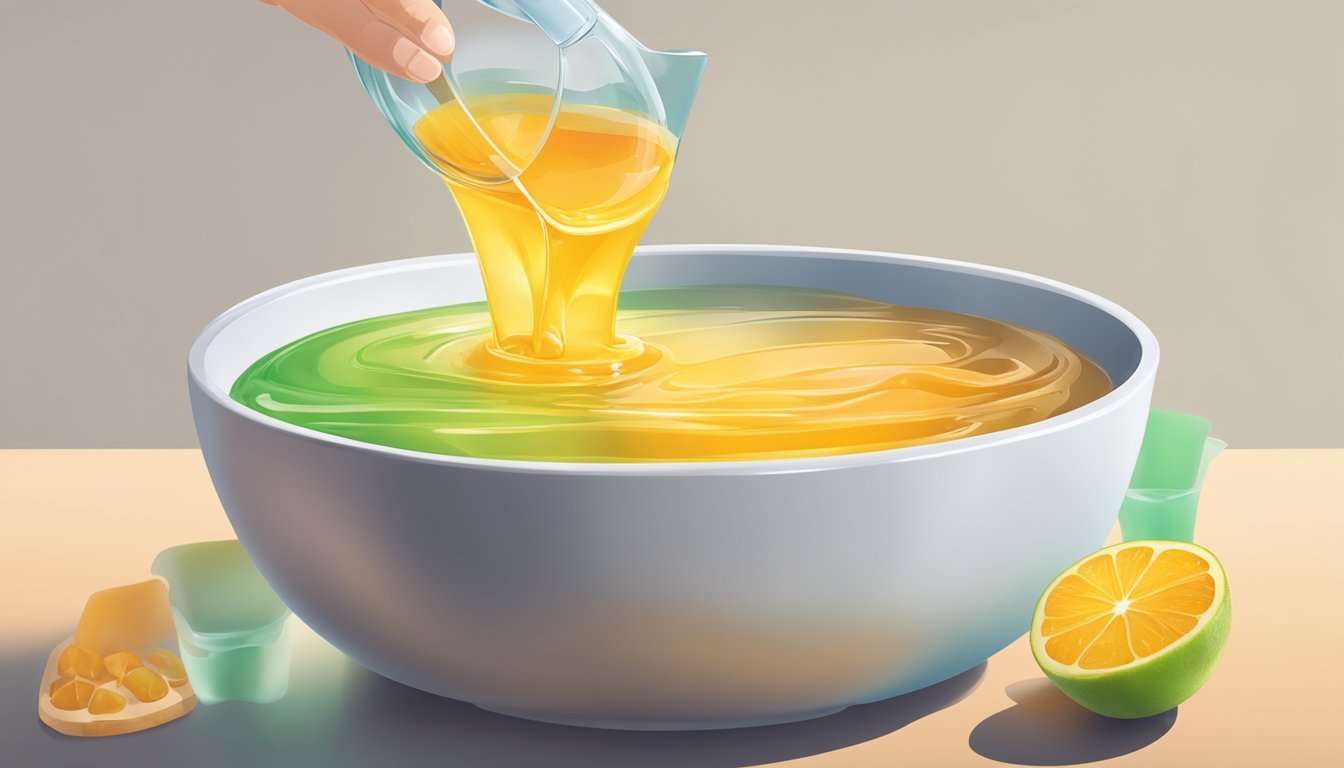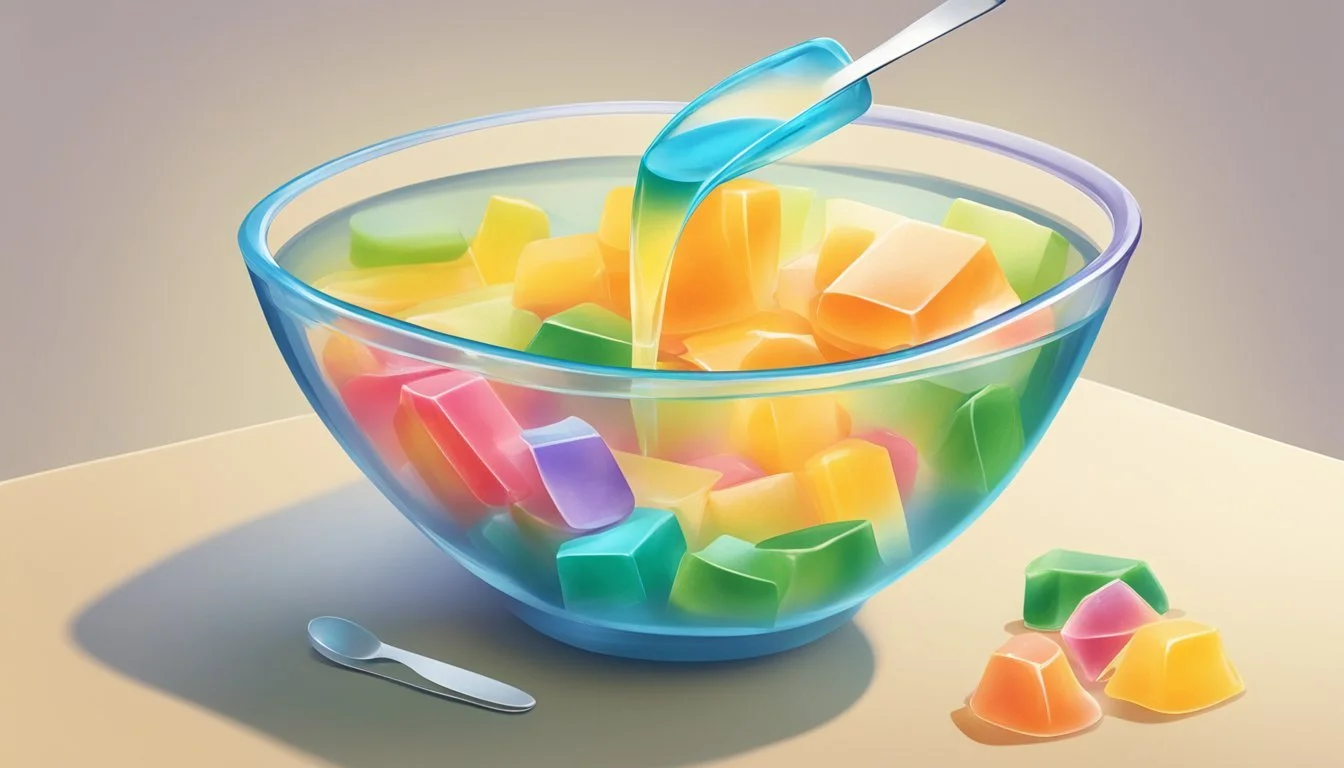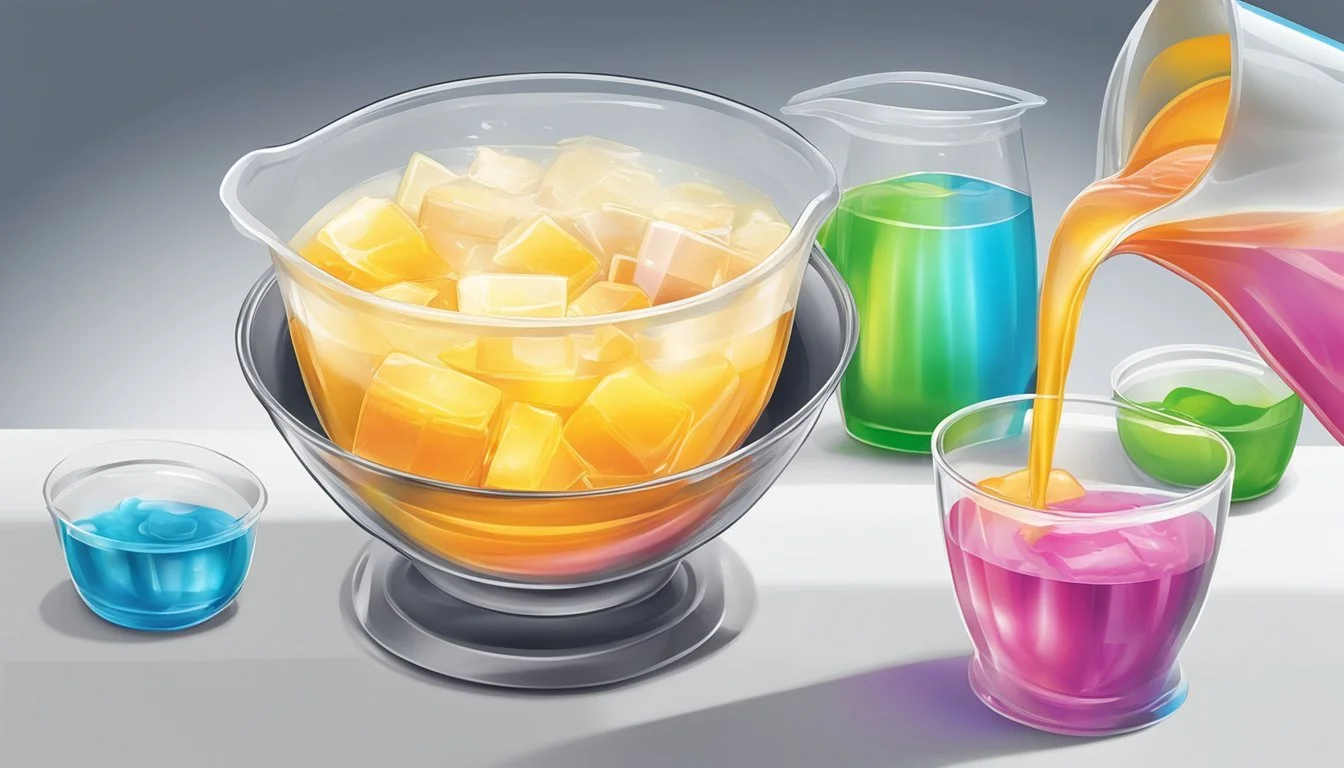How to Substitute Unflavored Gelatin for Flavored Gelatin
Simple Swaps and Tips
Gelatin, a versatile ingredient derived from animal collagen, comes in both flavored and unflavored forms, each serving its own purpose in cooking and baking. Unflavored gelatin is a colorless and tasteless substance, making it highly adaptable for a variety of dishes without altering the taste profiles. It provides a desirable texture to foods, ranging from gelled desserts to thick sauces and creamy cheesecakes.
In contrast, flavored gelatin already includes sweeteners and artificial flavors, which makes it a quick and convenient option for desserts, but limits its culinary versatility. When a recipe calls for flavored gelatin, but a more subtle flavor or a specific taste profile is desired, cooks can substitute unflavored gelatin with added ingredients to achieve the same texture and firmness, while perfectly tailoring the flavor to their liking.
The substitution process involves using unflavored gelatin as the base and incorporating other components such as fruit juices, zest, spices, or extracts to mimic the fruitiness or tang typically provided by its flavored counterpart. This allows for a more refined control over the end result, ensuring that the dish maintains its integrity without the overpowering or artificial tastes that can sometimes come from premixed flavored options.
Understanding Gelatin
When it comes to culinary uses, gelatin is prized for its ability to gel or thicken liquids. It's important to recognize that gelatin, whether unflavored or flavored, originates from the same base.
Types of Gelatin
Gelatin comes in several forms, each suitable for different culinary applications:
Powdered Gelatin: The most common form, it needs to be bloomed in cold water before use.
Sheet Gelatin: Also known as leaf gelatin, it’s used by soaking in water and then heating to dissolve.
Flavored Gelatin: It's powdered gelatin with added colors, flavors, and sometimes sugar.
Unflavored Gelatin: Pure gelatin without any additives, allowing for more culinary versatility.
Properties of Gelatin
Derived from collagen found in animal bones and skin, gelatin possesses specific properties:
Gelling Agent: Gelatin's ability to form gels is attributable to the protein it contains, which forms a mesh-like structure when dissolved in liquid and cooled.
Thermoreversible: Gelatin gels can melt when heated and set again when cooled, making it unique among thickeners.
Source: Gelatin is obtained from animal collagen, which requires careful processing to maintain its gelling properties.
It's the careful balance of these properties that makes gelatin such a versatile ingredient in the kitchen.
Substituting Gelatin
Choosing the right substitute for gelatin is crucial when it comes to texture and flavor, especially when swapping unflavored gelatin for its flavored counterpart. The following subsections provide specific measurements and options for gelatin alternatives.
Measuring the Substitute
The ratio of substitute to original gelatin is pivotal in achieving the desired consistency.
Agar-Agar: Use a 1:1 ratio if substituting agar-agar powder for gelatin.
Cornstarch: For thickening purposes, 1 tablespoon of cornstarch can replace 1 teaspoon of gelatin.
Carrageenan: This seaweed derivative should be used sparingly; generally, half the amount of gelatin called for in a recipe.
Gelatin Substitute Options
A variety of alternatives exist for those seeking vegan or vegetarian replacements for gelatin.
Agar-Agar: Derived from seaweed and functions as a plant-based thickening agent.
Cornstarch: Offers a neutral taste and fine texture, making it a suitable thickener for puddings and custards (how long do custards last?).
Carrageenan: Although it has a stronger thickening ability, its use needs moderation due to its intense gelling properties.
For vegan recipes, options like vegan jel or substitutes made from vegetable gums provide similar gelling effects as traditional gelatin does in jello and other desserts. When opting for these gelatin alternatives, one should ensure proper measurements for the best results.
Unflavored vs Flavored Gelatin
Unflavored gelatin offers versatility in recipes, allowing for the addition of specific flavors and control of sugar content, while flavored gelatin comes pre-mixed with flavoring agents and sugar, offering convenience for quick desserts.
Differences in Composition
Unflavored gelatin consists of pure protein derived from collagen, found in animal bones and skin. It contains no added flavors or sweeteners, making it a blank canvas for culinary use. Flavored gelatin, on the other hand, contains several additional ingredients:
Flavoring agents: Artificial or natural flavors are added to provide a specific taste.
Sugar: Pre-dosed to create a sweetened product.
Coloring agents: Often included to match the expected color of the flavor, such as red for strawberry.
Impact on Recipes
Unflavored gelatin allows cooks to precisely control the flavor profile and sweetness of their dishes. It is often used in recipes where a neutral taste is required or when adding other flavor components is preferable. For instance, it is perfect for savory dishes like aspics or for custom sweet desserts where one might add vanilla extract, fruit purees, or spices.
Flavored gelatin affects recipes by adding a predetermined taste and sweetness, which can limit creativity and adjustability. It is typically used for quick desserts such as classic gelatin desserts or a simple fruit-flavored gel, where the desired outcome is to achieve the flavor profile as designed by the product.
Vegan and Vegetarian Alternatives
In recent years, a variety of plant-based alternatives have emerged to replace gelatin in vegan and vegetarian cooking. The section below outlines specific substitutes and methods for preparing vegan gelatin.
Plant-Based Gelatin Substitutes
Agar-Agar: Derived from algae, agar-agar is a potent gelatin substitute. It is available in several forms:
Powder: Use at a 1:1 ratio with gelatin.
Flakes: 1 tablespoon agar flakes is equivalent to 1 teaspoon agar powder.
Bars: Half a bar is equal to 1 tablespoon agar flakes.
Carrageenan, also known as Irish moss, is another seaweed extract that can be used in place of gelatin. It is often found in vegan and kosher products.
Pectin: This fruit-based gelling agent is common in jams and jellies. It is derived mainly from citrus fruits.
Vegetable Gums: Guar gum and xanthan gum are plant-derived thickeners. While they do not provide the exact texture of gelatin, they can be suitable alternatives in some recipes.
Preparing Vegan Gelatin
To prepare vegan gelatin using agar-agar, the following steps should be followed:
Dissolve: Mix the agar powder, flakes, or bar with the liquid component of your recipe and bring it to a boil.
Simmer: Allow the mixture to simmer for a few minutes until fully dissolved.
Cool: Remove from heat and let it cool until it sets. Agar sets at room temperature.
For pectin, one should match the pectin type to recipe needs, as it varies in setting speed and gel strength.
When using vegetable gums like guar or xanthan, it's integral to disperse them evenly in the liquid to avoid clumping. A blender can assist in achieving the desired smooth consistency.
Usage in Cooking
When substituting unflavored gelatin for flavored gelatin in cooking, chefs maintain the dish's texture while manipulating its taste profile with additional ingredients. The process requires careful measurement and consideration of the flavors involved.
Desserts and Sweets
In desserts, unflavored gelatin is essential for achieving the desired consistency without overpowering the dish with additional flavor.
Puddings and Mousse: For a smooth, creamy texture, one packet of unflavored gelatin can replace one packet of flavored gelatin. Chefs often add vanilla extract, fruit purees, or chocolate to infuse the pudding or mousse with their desired taste.
Jams and Jellies: The gelatin acts as a thickening agent. Use unflavored gelatin in equal proportions to flavored, adding fruit juice or zest to compensate for the lack of flavoring.
Marshmallows and Glazes: Unflavored gelatin allows for a neutral base. Sweetness and flavor can be controlled through the addition of extracts or fruit juices.
Ice Cream: Gelatin helps prevent ice crystals from forming, ensuring a smoother texture. Substitute equally and add flavor with purees or essences.
Baked Goods and Panna Cotta: Unflavored gelatin's role is structural. Flavors come from other ingredients, such as fruit fillings or spices, making it an ideal substitute in recipes like cheesecakes or panna cotta.
Savory Dishes
Unflavored gelatin can also be a secret weapon in savory recipes, adding body without sweetness.
Soups and Sauces: Gelatin gives soups and sauces a rich, velvety texture. For every packet of flavored gelatin, substitute an equal amount of unflavored gelatin, allowing the natural flavors of the other ingredients to shine through.
Glazes: To create a glossy glaze for meats or vegetables, unflavored gelatin can be used in place of flavored, combined with broths, wines, or seasonings for depth of flavor.
Adjusting for Texture and Flavor
When substituting unflavored gelatin for flavored gelatin, a cook needs to consider both the texture and flavor of the resulting dish. Precise measurement, careful ingredient selection, and methodical preparation are crucial to achieving the desired outcome.
Sweetness and Aroma
Flavored gelatin typically contains added sugar and artificial or natural flavoring agents, delivering a distinct sweetness and aroma. To replicate this when using unflavored gelatin, one must add sugar and flavor extracts or fruit purées. The sugar should be adjusted according to taste, typically starting with one tablespoon per cup of liquid for a mildly sweet taste. For aroma, natural options like vanilla extract, citrus zest, or fruit juices are preferred. An individual should incorporate these aromatic components during the heating process to infuse the mixture adequately.
Vanilla extract: 1 teaspoon per cup of liquid
Citrus zest: 1 tablespoon per cup of liquid
Fruit juice/purée: Replace a portion of the liquid, typically one-quarter to one-half
Thickening and Setting
The primary function of gelatin, whether flavored or unflavored, is to thicken and set liquids. Unflavored gelatin, derived from collagen, offers the same gelling properties as its flavored counterpart but lacks the additives. To match the thickening prowess of flavored gelatin, one needs to carefully measure unflavored gelatin powder or sheets and hydrate it in cold water before dissolving it in hot liquid. If using agar agar, a seaweed derivative, or pectin, a fruit-based thickener, the ratios may differ.
Thickening Agents Comparison Table:
Agent Ratio Preparation Note Agar agar 1 teaspoon per cup of liquid Dissolve in boiling liquid Cornstarch 1-2 tablespoons per cup of liquid Make a slurry before adding Pectin Follow package instructions Derived from fruits, varies by type Gelatin 1 tablespoon or 3 sheets per 2 cups liquid Hydrate in cold water, then heat
One should always dissolve a thickener in cool liquid to avoid lumps and ensure an even set. The choice of thickener will also affect the setting time and the final texture of the dish; agar agar and pectin set firmer and quicker than gelatin.
Remember to always test the thickness during preparation by cooling a small sample to assess its firmness when substituting different thickeners. Adjust the quantity of the thickening agent as needed to obtain the perfect consistency.
Special Considerations
When substituting unflavored gelatin for flavored gelatin, there are two critical factors to consider: dietary restrictions and the effects of high-temperature cooking on substitutes. Each substitute has its unique properties, necessitating careful selection to ensure recipe success.
Dietary Restrictions
Individuals adhering to specific dietary restrictions may seek gelatin alternatives to align with their dietary needs, such as vegan or gluten-free diets. Here are common substitutions:
Vegan: Agar-agar, derived from seaweed, is a popular gelatin substitute that gels without animal products.
Gluten-Free: Both agar-agar and cornstarch are naturally gluten-free, making them suitable for those avoiding gluten.
It's important to note that while flavored gelatin typically includes added sugars and artificial flavors, unflavored gelatin and many of its substitutes do not. When using substitutes, one may need to add extra flavorings or sweeteners to achieve a similar taste to the flavored gelatin.
High-Temperature Cooking
Some gelatin substitutes may react differently to high temperatures, affecting the texture and stability of the final dish.
Agar-Agar: It requires boiling to activate its gelling properties, retains its texture upon reheating, and is not compromised at high temperatures.
Cornstarch: It thickens at a lower temperature than gelatin but can break down if overcooked or subjected to high heat for extended periods.
Each substitute’s behavior at elevated temperatures should be thoroughly understood to avoid compromising the dish's quality and texture.
Creative Applications
When replacing flavored gelatin with unflavored gelatin, one can explore a variety of innovative recipes and homemade delights, infusing them with customized flavors to suit any occasion or preference.
Innovative Recipes
Unflavored gelatin offers a blank canvas to incorporate a symphony of flavors. Homemade Fruit Gelatin is a prime example where one can blend fresh fruit or fruit puree with the traditional gelatin. By using a blender, they can create a smooth puree, to which they then add sweetener to taste before combining it with the dissolved unflavored gelatin.
Example: Homemade Fruit Gelatin Recipe
Ingredients Quantity Fresh fruit puree 2 cups Unflavored gelatin 2 teaspoons Water ½ cup Sweetener (honey, sugar, etc.) To taste Servings 4
To prepare, dissolve the gelatin in water, mix in the fruit puree, add sweetener, and refrigerate until set. Each individual can customize their gelatin with various fruits like strawberries, mango, or peach for a personalized touch.
Homemade Gelatin Delights
Creating Homemade Vegetable Gelatin Cups illustrates another creative way to use unflavored gelatin. Instead of fruit, they might use pureed vegetables, incorporating nutrients into a fun, jelly-like snack. In addition, one can mix in savory herbs and spices to complement the vegetable flavors.
For a creamy twist, a cook might combine unflavored gelatin with yogurt to create a smooth, rich dessert or snack. Here, proportions are vital, and they should aim for a ratio of one teaspoon of gelatin per cup of yogurt to achieve the perfect consistency.
By using unflavored gelatin, cooks have the freedom to adjust sweetness levels, choose between countless flavors, and create healthier versions of traditional gelatin-based treats.


